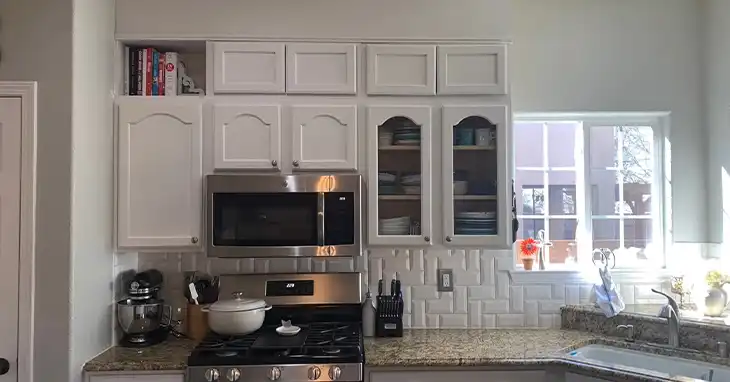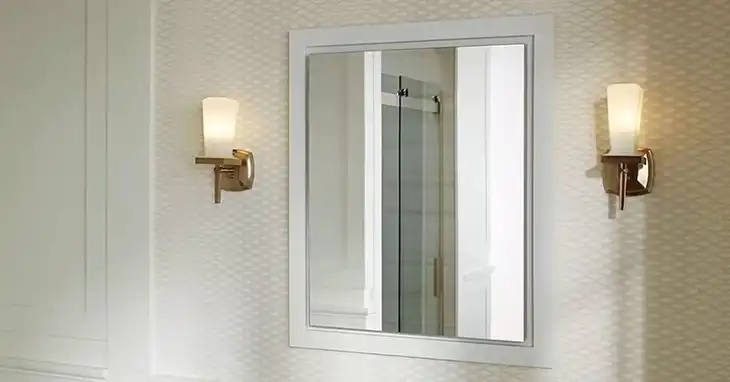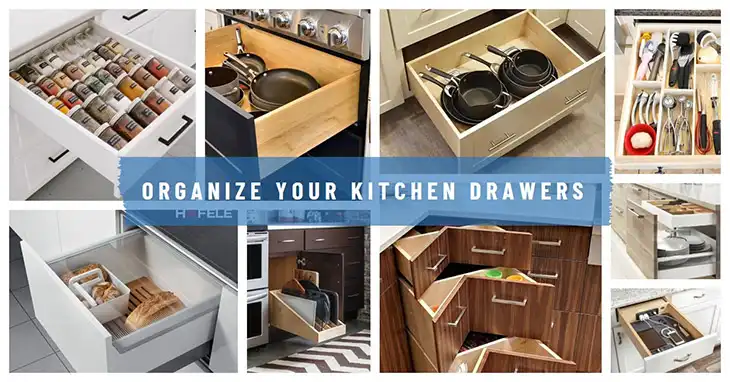How to Install a Blind Corner Base Cabinet | A Step-by-Step Guide
A blind corner base cabinet is a unique solution that transforms those awkward corner spaces into functional and stylish storage units. With its angled sides and innovative pull-out mechanisms, this cabinet design not only increases your storage capacity but also enhances the overall flow and aesthetics of your kitchen.
Before we dive into the installation process, let’s understand what sets a blind corner base cabinet apart. Unlike traditional cabinets, these units are designed to fit snugly into the corner, with angled sides that allow for a seamless integration.
Now that that’s out of the way, let’s learn how to install one.
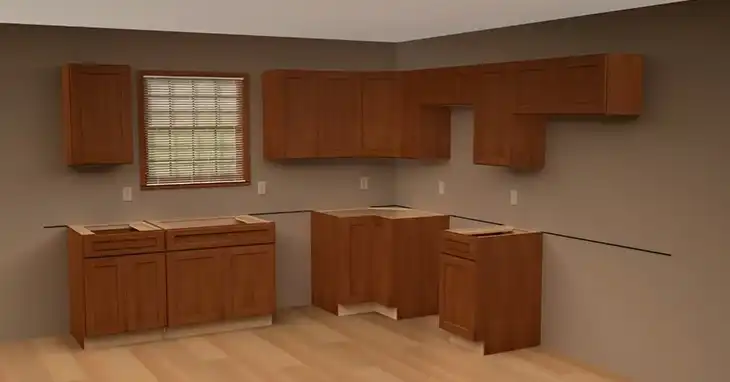
Step 1: Pre-Assemble the Base Cabinet
Some blind corner base cabinets require pre-assembly before installation. Consult the manufacturer’s instructions carefully, as this step may vary depending on the brand.
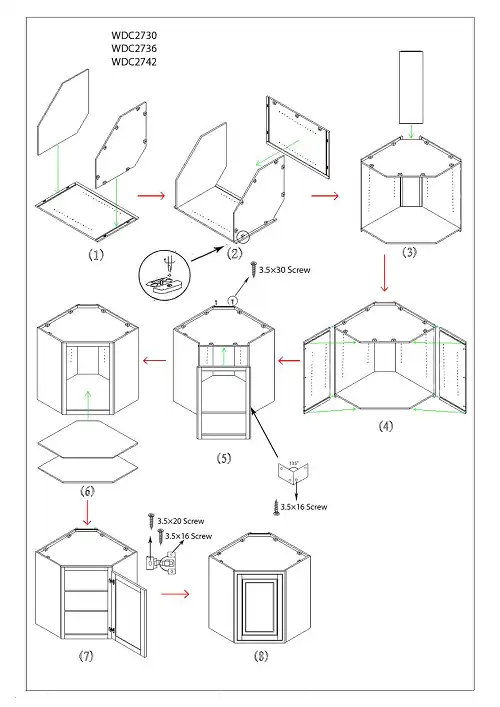
Picture: A Base Cabinet Installation Diagram
Typically, you’ll need to attach the back and base panels using screws and pre-drilled holes, secure the side panels to the base and back using screws or specialist connector systems, install a rail support (if needed) for the blind corner cabinet mechanisms, attach the adjustable feet to the base panel, and install an additional shelf (if applicable) using shelf supports or pre-drilled holes.
Step 2: Position the Cabinet
One of the key considerations when installing a blind corner base cabinet is ensuring proper clearance for the pull-out mechanism to operate smoothly. Before positioning the cabinet, understand the “pull-out” concept – these cabinets feature a tray or carousel that slides out, allowing you to access items in the back without straining.

Check the cabinet’s specifications for the minimum and maximum pull-out distances, as these will determine the optimal positioning. Using the cabinet’s dimensions and the pull-out specifications, mark the exact location on the floor where the cabinet will be installed, ensuring ample clearance for doors and drawers to open fully.
Step 3: Install the Cabinet
With the cabinet’s position marked, it’s time to secure it in place. Start by leveling the cabinet in both directions – front-to-back and side-to-side – using a level. This step is crucial for ensuring proper alignment and smooth operation of doors and drawers.

Next, secure the cabinet to the wall using appropriate fasteners based on your wall type. If you’re attaching to studs, use sturdy screws; for drywall, consider using drywall anchors. If you’re working with uneven floors or walls, you may need to make some minor adjustments to ensure a level and secure installation.
Step 4: Install Filler Panel (if applicable)

In some cases, you may need to install a filler panel to create a seamless look and allow for proper clearance for doors and drawers. The filler panel attaches to the cabinet’s vertical side (known as the stile) using screws or specialist connectors, and it should be aligned flush with adjacent cabinets for a cohesive appearance.
Step 5: Door and Drawer Installation
Once the cabinet is securely in place, it’s time to install the doors and drawers. Some blind corner cabinets offer reversible door and drawer options, allowing for flexible installation based on your specific needs.

Start by installing the hinges and drawer slides on the cabinet frame using the appropriate screws. Then, hang the door on the hinges and attach the drawer fronts to the drawer slides. Don’t forget to make any necessary adjustments to ensure smooth operation and proper alignment, ensuring the doors and drawers open and close without catching.
Step 6: Test and Adjust
After completing the installation, take a moment to test the operation of the doors and drawers. Open and close them several times, checking for any catching or misalignment. If you notice any issues, use the adjustments on the hinges and drawer slides to fine-tune the alignment and clearance.
Alternative Options
While blind corner base cabinets are a popular choice, they may not suit every kitchen layout or storage need. Consider alternative options like diagonal corner cabinets or “magic corners” – innovative solutions that provide easy access to corner spaces without the need for pull-out mechanisms.
Weigh the pros and cons of each option, taking into account your specific space constraints and storage requirements. In some cases, a different corner cabinet design may better serve your needs.
Final Words
Installing a blind corner base cabinet is a rewarding project that not only enhances your kitchen’s functionality but also adds a touch of elegance and sophistication. By following these step-by-step instructions, gathering the necessary tools and materials, and paying attention to detail, you’ll be well on your way to a successful installation.
Remember, proper planning and preparation are key to ensuring a smooth process and achieving the desired outcome. Don’t hesitate to seek professional assistance if you encounter any challenges along the way.
FAQ
How does a blind corner base cabinet work?
A blind corner base cabinet has a standard cabinet body with angled sides that fit into a corner. The unique feature is an internal mechanism, often a revolving carousel or pull-out shelves, that allows you to access items stored in the back of the cabinet without reaching into a deep, awkward space.
How much space do you need for blind corner cabinets?
Standard blind corner base cabinets typically come in widths of 36 inches or wider. However, the crucial measurement is the “pull-out” distance. This refers to how far the cabinet needs to be pulled away from the wall to allow the internal mechanism to function properly. Consult the cabinet specifications for minimum and maximum pull-out requirements to ensure it fits your designated space.
What is the difference between a blind corner cabinet and a corner cabinet?
Not all corner cabinets are blind corner cabinets. A regular corner cabinet might have a deeper cabinet body with shelves or a fixed interior, making it difficult to access items stored in the back. A blind corner cabinet, on the other hand, utilizes a pull-out mechanism or carousel for better accessibility.
How to organize a blind corner cupboard/cabinet?
Organizing a blind corner cabinet is crucial for maximizing its functionality. Here are some tips:
- Use shelf dividers or bins to categorize items and prevent them from rolling around.
- Store heavier items on lower shelves and lighter items on higher shelves for stability.
- Utilize lazy Susan turntables or pull-out trays for easy access to items in the back.
- Label shelves for easy identification of stored items.
What is the advantage of the blind corner base cabinet?
The main advantage of a blind corner base cabinet is maximizing storage space in a kitchen corner that would otherwise be wasted. It also improves accessibility to items stored in the back compared to a traditional deep corner cabinet. Additionally, blind corner cabinets can enhance the overall visual flow of your kitchen layout.

